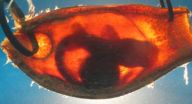(Press-News.org) WEST LAFAYETTE, Ind. — Doctors may soon be using a system in the operating room that recognizes hand gestures as commands to tell a computer to browse and display medical images of the patient during a surgery.
Surgeons routinely need to review medical images and records during surgery, but stepping away from the operating table and touching a keyboard and mouse can delay the procedure and increase the risk of spreading infection-causing bacteria, said Juan Pablo Wachs, an assistant professor of industrial engineering at Purdue University.
"One of the most ubiquitous pieces of equipment in U.S. surgical units is the computer workstation, which allows access to medical images before and during surgery," he said. "However, computers and their peripherals are difficult to sterilize, and keyboards and mice have been found to be a source of contamination. Also, when nurses or assistants operate the keyboard for the surgeon, the process of conveying information accurately has proven cumbersome and inefficient since spoken dialogue can be time-consuming and leads to frustration and delays in the surgery."
Researchers are creating a system that uses depth-sensing cameras and specialized algorithms to recognize hand gestures as commands to manipulate MRI images on a large display. Recent research to develop the algorithms has been led by doctoral student Mithun George Jacob.
Findings from the research were detailed in a paper published in December in the Journal of the American Medical Informatics Association. The paper was written by Jacob, Wachs and Rebecca A. Packer, an associate professor of neurology and neurosurgery in Purdue's College of Veterinary Medicine.
The researchers validated the system, working with veterinary surgeons to collect a set of gestures natural for clinicians and surgeons. The surgeons were asked to specify functions they perform with MRI images in typical surgeries and to suggest gestures for commands. Ten gestures were chosen: rotate clockwise and counterclockwise; browse left and right; up and down; increase and decrease brightness; and zoom in and out.
Critical to the system's accuracy is the use of "contextual information" in the operating room -- cameras observe the surgeon's torso and head -- to determine and continuously monitor what the surgeon wants to do.
"A major challenge is to endow computers with the ability to understand the context in which gestures are made and to discriminate between intended gestures versus unintended gestures," Wachs said. "Surgeons will make many gestures during the course of a surgery to communicate with other doctors and nurses. The main challenge is to create algorithms capable of understanding the difference between these gestures and those specifically intended as commands to browse the image-viewing system. We can determine context by looking at the position of the torso and the orientation of the surgeon's gaze. Based on the direction of the gaze and the torso position we can assess whether the surgeon wants to access medical images."
The hand-gesture recognition system uses a camera developed by Microsoft, called Kinect, which senses three-dimensional space. The camera, found in consumer electronics games that can track a person's hands, maps the surgeon's body in 3-D.
Findings showed that integrating context allows the algorithms to accurately distinguish image-browsing commands from unrelated gestures, reducing false positives from 20.8 percent to 2.3 percent.
"If you are getting false alarms 20 percent of the time, that's a big drawback," Wachs said. "So we've been able to greatly improve accuracy in distinguishing commands from other gestures."
The system also has been shown to have a mean accuracy of about 93 percent in translating gestures into specific commands, such as rotating and browsing images.
The algorithm takes into account what phase the surgery is in, which aids in determining the proper context for interpreting the gestures and reducing the browsing time.
"By observing the progress of the surgery we can tell what is the most likely image the surgeon will want to see next," Wachs said.
The researchers also are exploring context using a mock brain biopsy needle that can be tracked in the brain.
"The needle's location provides context, allowing the system to anticipate which images the surgeon will need to see next and reducing the number of gestures needed," Wachs said. "So instead of taking five minutes to browse, the surgeon gets there faster."
Sensors in the surgical needle reveal the position of its tip.
INFORMATION:
The research was supported by the Agency for Healthcare Research and Quality, grant number R03HS019837.
Writer: Emil Venere, 765-494-4709, venere@purdue.edu
Sources: Juan Pablo Wachs, 765 496-7380, jpwachs@purdue.edu
Related Web sites:
Juan Pablo Wachs: http://web.ics.purdue.edu/~jpwachs/
IMAGE CAPTION:
This table shows hand gestures surgeons might use in the operating room to browse and display medical images of the patient during an operation. Surgeons routinely need to review medical images and records during surgery, but stepping away from the operating table and touching a keyboard and mouse can delay the surgery and increase the risk of spreading infection-causing bacteria (Purdue University photo)
A publication-quality photo is available at http://www.purdue.edu/uns/images/2013/gestures-table.jpg
ABSTRACT
HAND-GESTURE-BASED STERILE INTERFACE FOR THE OPERATING ROOM USING CONTEXTUAL CUES FOR THE NAVIGATION OF RADIOLOGICAL IMAGES
Mithun George Jacob1, Juan Pablo Wachs1, Rebecca A Packer2
1School of Industrial Engineering, Purdue University
2Departments of Basic Medical Sciences and Veterinary Clinical Sciences, College of Veterinary Medicine, Purdue University
This paper presents a method to improve the navigation and manipulation of radiological images through a sterile hand gesture recognition interface based on attentional contextual cues. Computer vision algorithms were developed to extract intention and attention cues from the surgeon's behavior and combine them with sensory data from a commodity depth camera. The developed interface was tested in a usability experiment to assess the effectiveness of the new interface. An image navigation and manipulation task was performed, and the gesture recognition accuracy, false positives and task completion times were computed to evaluate system performance. Experimental results show that gesture interaction and surgeon behavior analysis can be used to accurately navigate, manipulate and access MRI images, and therefore this modality could replace the use of keyboard and mice-based interfaces.
Note to Journalists: A video related to the research at available at http://youtu.be/jfgX3KGJdsk, and the research paper is available by contacting Emil Venere, 765-494-4709, venere@purdue.edu
Surgeons may use hand gestures to manipulate MRI images in OR
2013-01-10
ELSE PRESS RELEASES FROM THIS DATE:
Which study strategies make the grade?
2013-01-10
Students everywhere, put down those highlighters and pick up some flashcards! Some of the most popular study strategies — such as highlighting and even rereading — don't show much promise for improving student learning, according to a new report published in Psychological Science in the Public Interest, a journal of the Association for Psychological Science.
In the report, John Dunlosky of Kent State University and a team of distinguished psychological scientists review the scientific evidence for ten learning techniques commonly used by students.
"Schools and parents ...
Cutting in and weaving irritate drivers the most, new CAMH study on road rage shows
2013-01-10
January 10, 2013 (Toronto) - Cutting in and weaving, speeding, and hostile displays are among the top online complaints posted by drivers, according to a new study by the Centre for Addiction and Mental Health (CAMH) recently published in an online issue of Accident Analysis and Prevention.
Driver aggression is a major safety concern and researchers estimate this behaviour is a factor in nearly half of all motor vehicle collisions. Identifying the underlying causes and strategies for preventing driver aggression continues to be a priority.
CAMH researcher Dr. Christine ...
High-frequency stock trading of little value to investors, general public
2013-01-10
The increase in the speed of stock trading from microseconds to nanoseconds leads to an increase in order cancellation, but little else of value to investors and the general public, says research by a University of Illinois business professor.
According to a forthcoming study by Mao Ye, a professor of finance at Illinois, the arms race in speed at the sub-millisecond level of stock trading is a "purely positional game" in which a trader's payoff depends on transaction speed relative to other traders.
"There are lots of extreme views about high-frequency trading, but ...
Decline in available liver transplants expected
2013-01-10
A new study, funded in part by the National Institutes of Health (NIH) and Health Resources and Services Administration, and published in the January 2013 issue of Liver Transplantation, a journal of the American Association for the Study of Liver Diseases (AASLD), found that the non-use of donor livers climbed through 2010 due to a worsening of donor liver quality, primarily from donation following cardiac death. Diabetes, donor age, and body mass index (BMI) were also linked to a decrease in use of organs.
"For patients with end-stage liver disease, transplantation ...
Lower nitrogen losses with perennial biofuel crops
2013-01-10
URBANA – Perennial biofuel crops such as miscanthus, whose high yields have led them to be considered an eventual alternative to corn in producing ethanol, are now shown to have another beneficial characteristic–the ability to reduce the escape of nitrogen in the environment. In a 4-year University of Illinois study that compared miscanthus, switchgrass, and mixed prairie species to typical corn-corn-soybean rotations, each of the perennial crops were highly efficient at reducing nitrogen losses, with miscanthus having the greatest yield.
"Our results clearly demonstrate ...
This week in Blood: Jan. 10, 2013
2013-01-10
Welcome to "This Week in Blood," a weekly snapshot of the hottest studies from each week's issue of Blood, the official journal of the American Society of Hematology (ASH), hand-picked by Blood Editor-in-Chief Bob Löwenberg, MD, and Deputy Editor Nancy Berliner, MD.
Systemic delivery of a TLR7 agonist in combination with radiation primes durable anti-tumor immune responses in mouse models of lymphoma, Dovedi et al.
This week's plenary paper offers a promising potential new immunotherapeutic modality for the treatment of lymphoma. The authors present convincing data ...
Helping patients navigate new cancer drugs
2013-01-10
EAST LANSING, Mich. — As cancer treatment in pill form transforms how care is delivered, a new Michigan State University study underscores the challenges patients face in administering their own chemotherapy outside the supervised environment of a cancer clinic.
Chemotherapy pills can target specific cancers better than some traditional intravenous drugs, said Sandra Spoelstra, an MSU assistant professor of nursing who led the study. But they also can be difficult for patients to take.
"Prescriptions for some oral pills have complex instructions," Spoelstra said. ...
Measuring genomic response to infection leads to earlier, accurate diagnoses
2013-01-10
DURHAM, N.C. -- Duke researchers are looking to genomic technologies – not the isolation of bacteria or viruses – to quickly detect and diagnose infectious diseases such as the flu and staph.
Two studies appearing online Jan. 9, 2013, both in the journal PLOS ONE, show how a pattern of genomic information among infected individuals can be used to accurately pinpoint the cause of infection.
"Traditional diagnostic tests for infectious diseases rely on detecting the specific illness-causing pathogens. So you only find what you're looking for," said Geoffrey Ginsburg, ...
Stem cells may hold promise for Lou Gehrig's disease
2013-01-10
SAN DIEGO – Apparent stem cell transplant success in mice may hold promise for people with amyotrophic lateral sclerosis (ALS), or Lou Gehrig's disease. The results of the study were released today and will be presented at the American Academy of Neurology's 65th Annual Meeting in San Diego, March 16 to 23, 2013.
"There have been remarkable strides in stem cell transplantation when it comes to other diseases, such as cancer and heart failure," said study author Stefania Corti, MD, PhD, with the University of Milan in Italy and a member of the American Academy of Neurology. ...
Baby sharks stay still to avoid being detected by predators
2013-01-10
VIDEO:
This is a video clip of a bamboo shark embryo responding to an electrical stimulus by ceasing gill movements.
Click here for more information.
Baby sharks still developing in their egg cases can sense when predators are near, and keep very still to avoid being detected, according to research published January 9 in the open access journal PLOS ONE by Ryan Kempster from the University of Western Australia and colleagues.
Adult sharks are known to use highly sensitive ...




